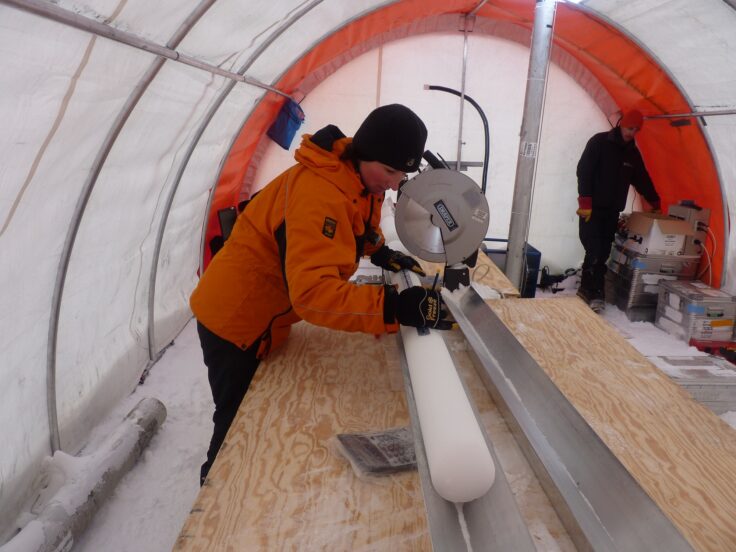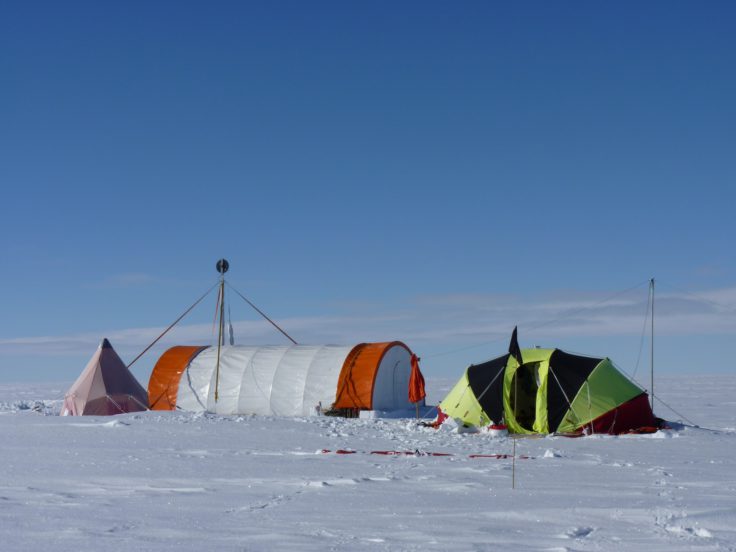West Antarctic coastal snow accumulation rose 30 percent during 20th century
Annual snow accumulation on West Antarctica’s coastal ice sheet increased dramatically during the 20th century, according to a new study published today (Wednesday 4 November) in the American Geophysical Union journal Geophysical Research Letters. The last three decades saw more snow build up on the ice sheet than at any other time in the last 300 years.

The research gives scientists new insight into Antarctica’s ice sheet. Understanding how the ice sheet grows and shrinks over time enhances scientists’ understanding of the processes that impact global sea levels.
The new study used ice cores to estimate annual snow accumulation from 1712 to 2010 along the coastal West Antarctic. Until 1899, annual snow accumulation remained steady, averaging 33 and 40 centimeters (13 and 16 inches) water, or melted snow, each year at two locations.
Annual snow accumulation increased in the early 20th century, rising 30 percent between 1900 and 2010 and the researchers found that in the last 30 years of the study, the ice sheet gained nearly 5 meters (16 feet) more water than it did during the first 30 years of the studied time period.

Lead author Dr Liz Thomas at British Antarctic Survey (BAS) says:
“Since the record is 300 years long, we can see that the amount of snow that has been accumulating in this region since the 1990s is the highest we have seen in the last 300 years. The 20th century increases look unusual.”
Thomas attributes the higher annual snow accumulation over the last 30 years in part to an intensification of a regional low pressure system and more storms in the region. These storms could increase as a result of climate change, possibly leading to further increases in snow accumulation.
Thomas says: “In this region, the same storms that have driven increased snowfall inland have brought warmer ocean currents into contact with West Antarctic’s ice shelves, resulting in rapid thinning. Thus the increased snowfall we report here has not led to thickening of the ice sheet, but is in fact another symptom of the changes that are driving contemporary ice sheet loss.
“We urgently need to understand whether we are losing ice, at what rate, and what is causing this loss in order to make accurate predictions for future change and Antarctica’s contribution to global sea level rise.”
Notes for Journalists
For the new study, researchers collected two ice cores from Ellsworth Land, the strip of land that connects the Antarctic Peninsula to the rest of the continent. The ice cores contain layer upon layer of ice – the remnants of yearly snowfall. By measuring the thickness of the ice laid down each year, the researchers estimated annual snow accumulation for the past 300 years.
The recent heavy snow accrual appears to be part of a gradual, long-term rise in annual snow accumulation that started in the early 1900s and accelerated in the 1980s, the study found. The study’s authors found that starting in the early 20th century an additional 1.5 centimeters (0.6 inches) of water, or melted snow, was added to the ice sheet each decade. From 2001 to 2010, the amount of water added to the ice sheet each year was 15 centimeters (6 inches) greater than it was before 1900, according to the study’s authors.
The paper “Twentieth century increase in snowfall in coastal West Antarctica” by E. R. Thomas, J. S. Hosking, R. R. Tuckwell, R. A. Warren, and E. C. Ludlow is published in the American Geophysical Union journal Geophysical Research Letters.
